Flashtalk by Nasreen Burgher and Gustav Rautenbach
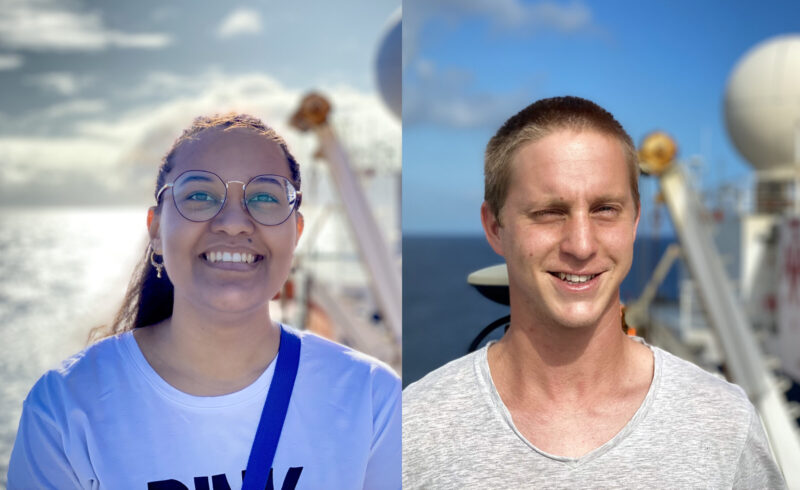
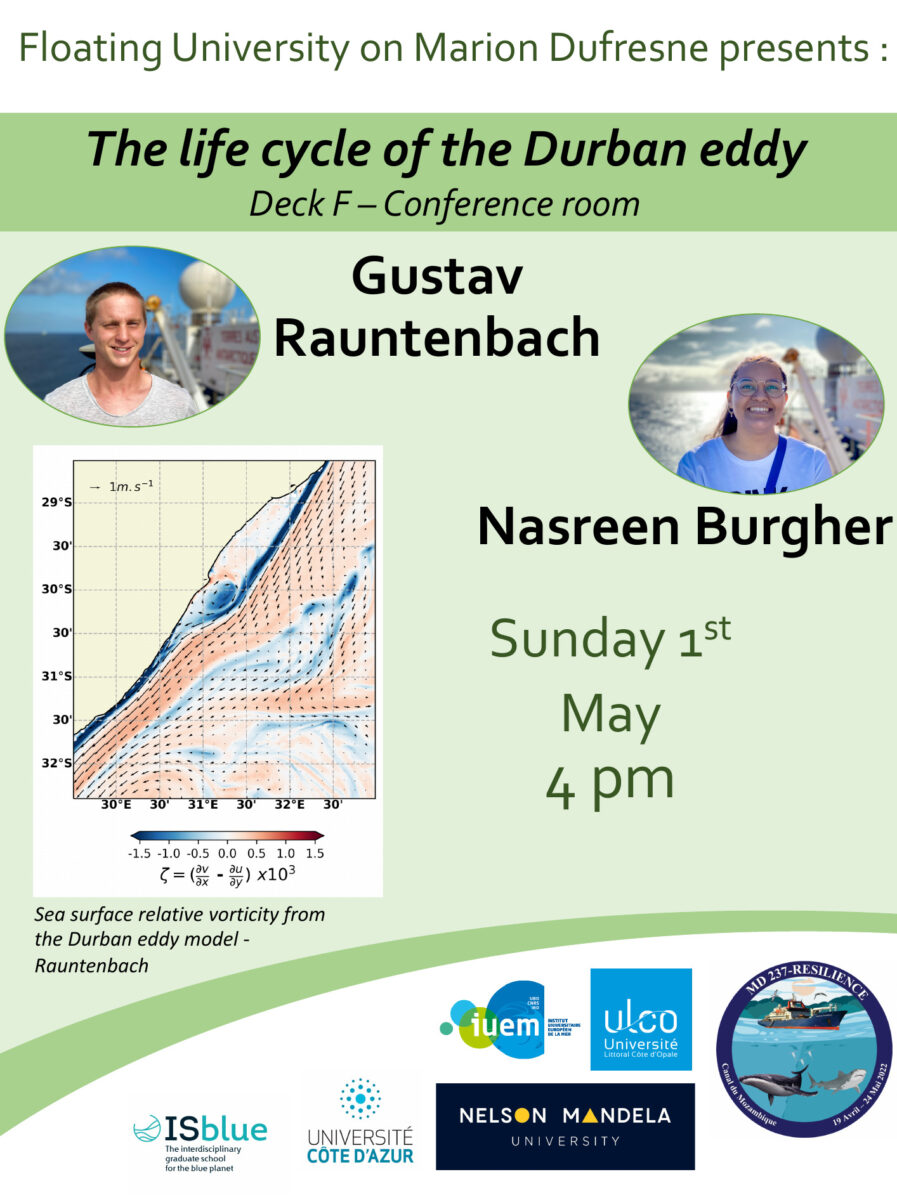
May 1st, 2022, R/V Marion Dufresne, Off the South African coasts
Authors: Nasreen Burgher, Guerric Barriere & Sara Sergi
Oceanic turbulence on the landward site of the Agulhas Current
Nasreen Burgher
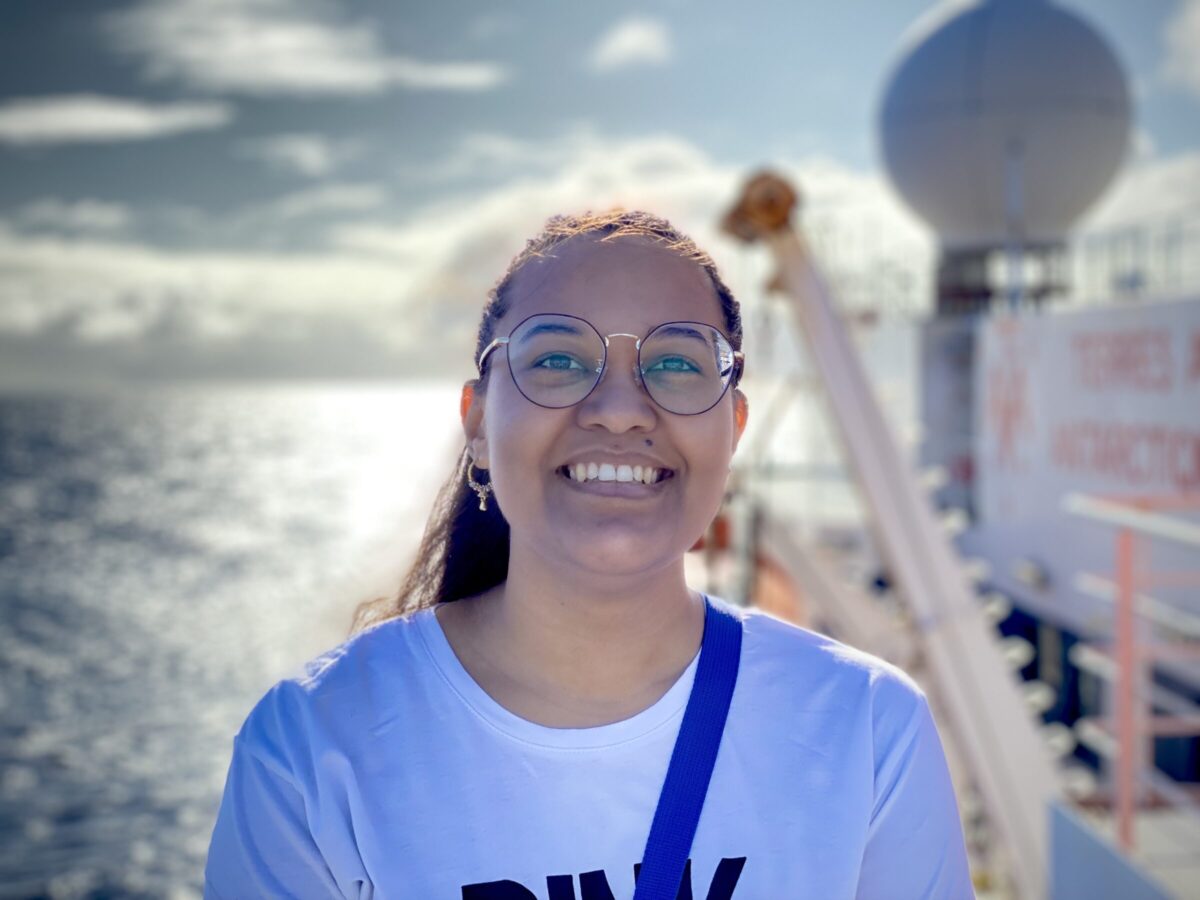
Nasreen Burgher is a 2nd year MSc student in Physical Oceanography registered at Nelson Mandela University in Gqeberha South Africa. In her project, supervised by Dr Laura Braby, Dr Steven Herbette, Prof Juliet Hermes and Prof Michael Roberts, she is investigating the phenology of coastal oceanic turbulence on the landward side of the Agulhas Current.
The Agulhas Current (AC) is the strongest western boundary current in the southern hemisphere. It is known for its fast-flowing current core and warm waters. The AC is described as being specially bi-modal, with a stable current upstream of Port Elizabeth (Northern region of the AC) and an unstable current downstream of Port Elizabeth (Southern region of the AC). The stability of the current in the Northern region is due to the arrow and steep shelf edge, but as the current propagates southwards, it modifies in behavior due to the widening of the continental slope in the Agulhas Bank area. As the AC passes the Agulhas Bank, it surpasses the tip of the African continent and abruptly veers eastward. This phenomenon is known as the Agulhas Retroflection. The retroflection is accompanied by the shedding of large anticyclonic Agulhas Rings into the South Atlantic which together with smaller cyclonic vortices and filaments, transport warm and saline waters into the South Atlantic Ocean, commonly referred to as Agulhas leakage. Water masses of the Agulhas Current that do not leak into the South Atlantic Ocean, flow eastwards within the Agulhas Return Current.
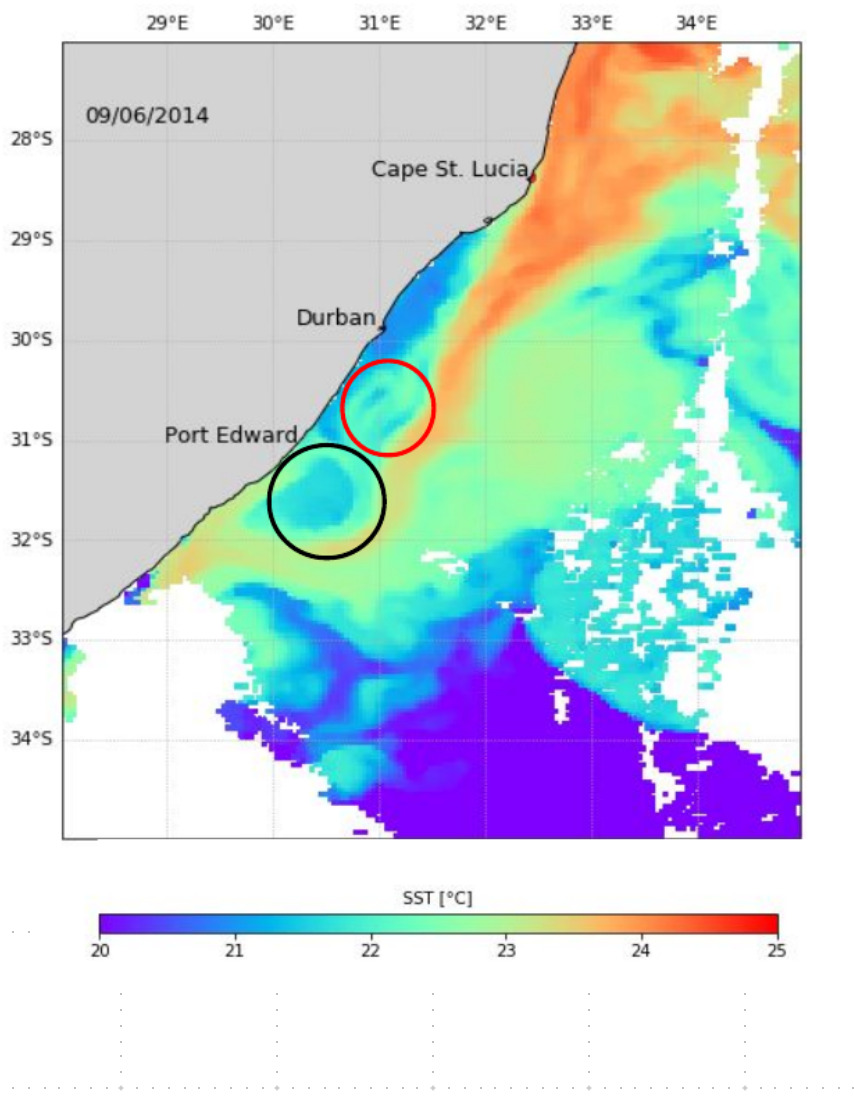
(Sub)-mesoscale features such as the commonly known Natal Pulse and the more elusive Durban Eddy (indicated respectively by the black and red circles in the left image), are studied using remote sensing satellite products and in situ data. The Natal Pulse occurs 1 to 5 times a year on average. This cold water core eddy is generated north of Durban and grows in size and intensity as it moves southwards. The Durban Eddy, also a cylconic eddy, is generated roughly every 14 days at Durban. The eddy remains trapped as it grows in size and intensity, eventually breaking away. This is known as a break away eddy.
In her research, Nasreen looked at high resolution (4 and 5-km horizontal resolution) temperature satellite data (respectively from the MODIS Aqua and Climate Change Initiative project) to look at the spatial gradient of these proprieties in a cross-shore transect. The aim of this work is to measure the intensity, frequency and lifespan of the (sub)mesoscale features detected by the spatial thermal gradients.
The life-cycle of the Durban Eddy: Generation to decay
Gustav Rautenbach
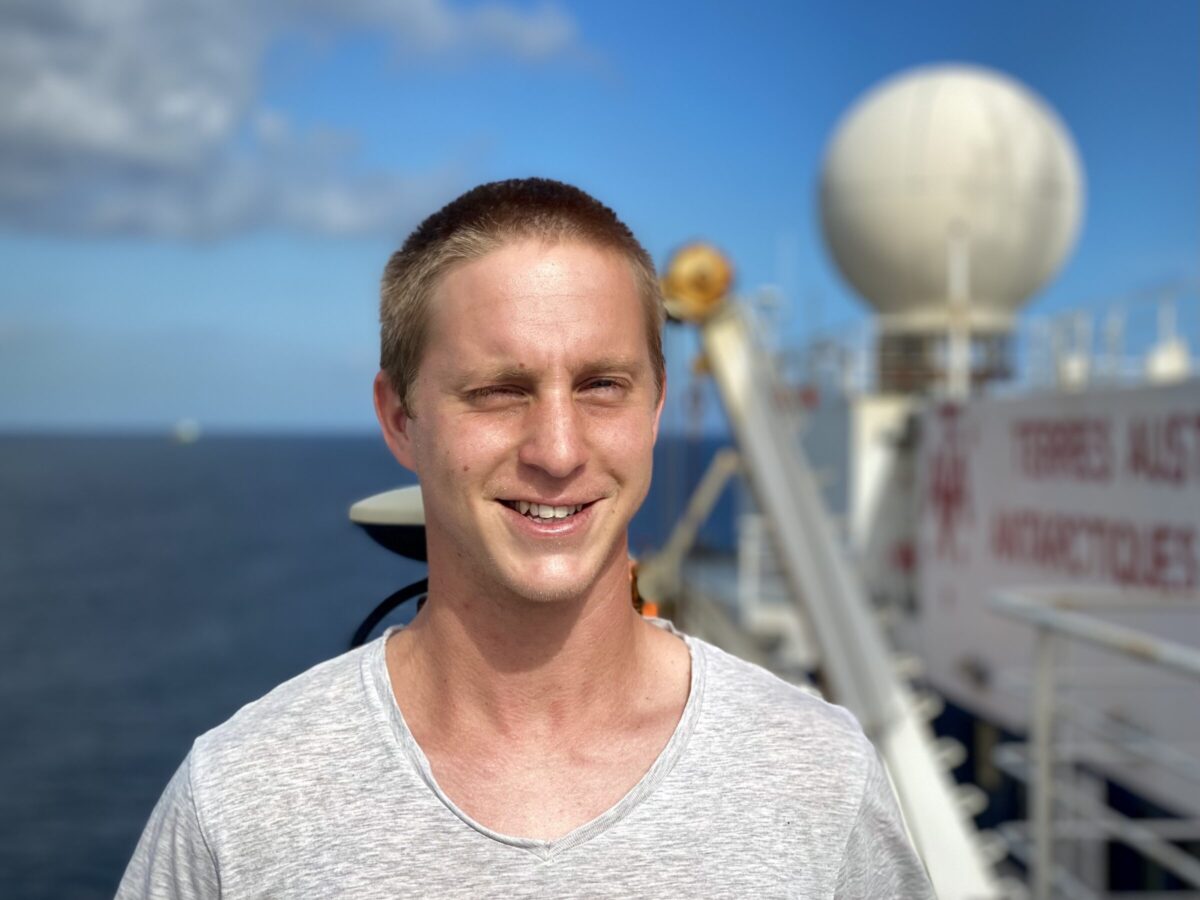
Gustav is a PhD student in Physical Oceanography completing a co-badge PhD at Nelson Mandela University, Gqeberha (South Africa) and University of Brest, Brest (France). His research project on the life-cycle of the Durban Eddy is supervised by Dr Steven Herbette, Dr Gildas Cambon, Prof Pierrick Penvin, Dr Jennifer Vitch and Prof Michael Roberts.
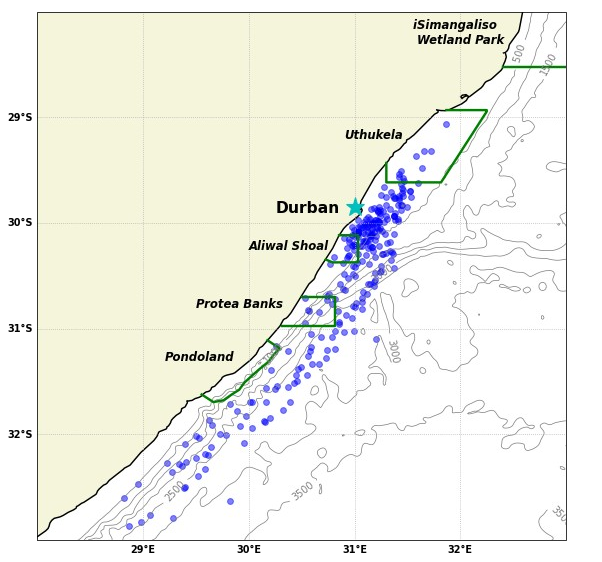
Studying (sub)-mesoscale features inshore of the coast has many challenges for remote sensing. Indeed many products do not have a high enough resolution to detect the (sub)-mesoscale features. On the other side, higher resolution products can have a cloud cover and missing data issues. Consequentially numerical models appear as interesting solutions for studying these features .
In his researches, Gustav is using the CROCO model for analyse the Durban Eddy life-cycle. The AMEDA algorithm is then used to detected eddies in Gustav’s model outputs, named the DURBan eddy Simulation (DURBS). This algorithm use different methods for it: the geometry of surface deformations, or kinematic proprieties such as the Okubo-Weiss computation which take into account the vorticity.
The above figure locates the eddies’ center identified in DURBS: a spawning region for eddies is identified offshore of Durban with a southward propagation of the latter ones. Eddies’ mean radius is about 15-20 km and mean velocities are about 0.6 m/s. Next step of Gustav’s researches will be to analyse the vertical structure of the Durban eddies reproduced in the 3D CROCO model.
 Attention, vous utilisez un navigateur peu sûr !
Attention, vous utilisez un navigateur peu sûr !